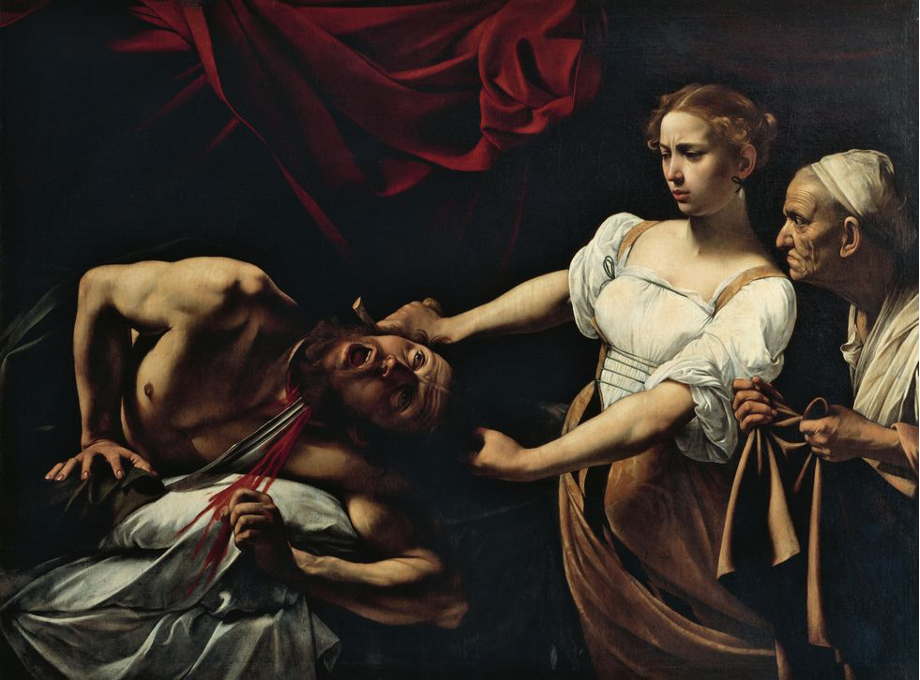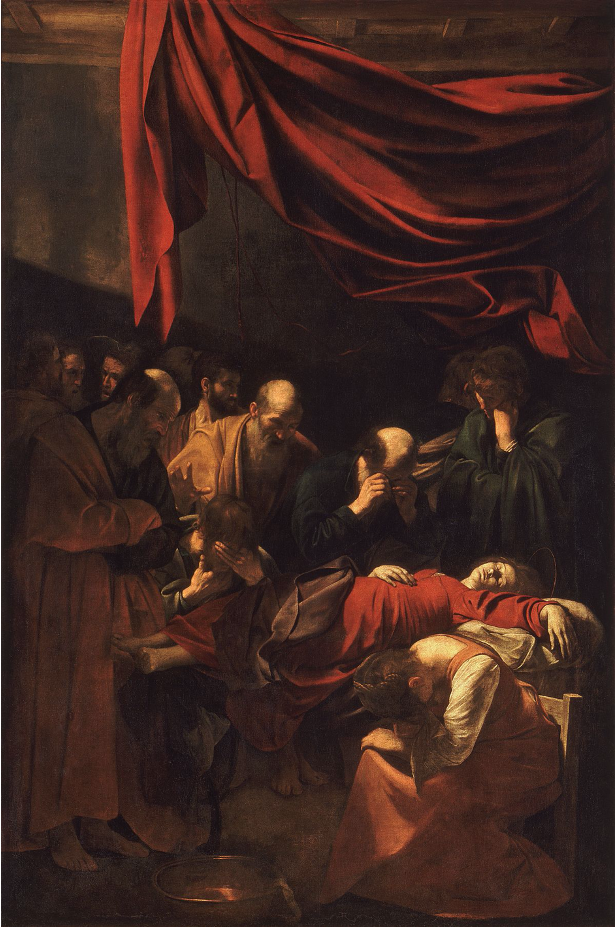Arrogance, defiance, and murder! As unusual as it may sound for an artist, these traits fittingly describe the Baroque master, Caravaggio, whose dramatic narratives mirrored his tempestuous lifestyle. To me, his paintings of spectacle were enough for my fascination, but it was his biography of rebellion, exile, and mystery that piqued my interest into Art History as a whole.
As a child, Caravaggio tragically lost both of his parents to the plague and, when old enough, decided to move from his hometown in Northern Italy to Rome (1592)- the epicentre of the artistic world. Here, he yearned for a chance to paint a new and better life for himself, however his incessant bad behaviour proved to challenge this young idealism.
When I first learnt about Caravaggio, I was intrigued to hear that most of what art historians know about him has been collated from his criminal records. In between his time spent painting and selling artworks, he was often caught up in drunken brawls, street fights, and violent riots. These acts led to his repeated arrest and trial precisely eleven times for things including: fighting with waiters, abusing police, and yes… murder!
As the story goes, in 1606, Caravaggio had an argument with a man that escalated into a sword fight. Though not intentionally wanting to kill him, Caravaggio stabbed the man who later bled out from his wound. Choosing incompliance, as always, Caravaggio fled Rome in search for pardon, but little did he know he was wanted for murder by no other than the Pope who prayed on the justice of a death sentence against him.
Despite his controversial behaviour, Caravaggio was undoubtedly an artistic genius who gained immense popularity through his works of religious and mythological narratives. In these paintings, he was revered for his use of ‘tenebrism’, an Italian word used to describe his dramatic technique of contrasting light. Caravaggio played with light for its theatricality and used it to aid viewers in distinguishing the “good” and “bad” characters in his works. For the public, who would have largely been illiterate, Caravaggio’s techniques were a marker of clarity and inclusion that pushed the message that art was for all.
So, it’s clear why Caravaggio was viewed as rebellious, but why were his paintings seen in the same light?
This painting is one of my favourite depictions of his artistic defiances. Although seemingly devout, this work was rejected for its religious and artistic disobedience. Here, Caravaggio illustrated the transit of the Virgin. We see her lifeless body flayed in the centre of the composition with a crowd of people that surround and mourn her. Her feet lay exposed, and a heavenly light shines down onto her face which expresses a realistic stillness of death. When I look at this artwork, I can almost hear the softened cries of the crowd and feel the heaviness of despair and heartbreak in the air.
Customarily, the transit of the Virgin would have been painted in a more idealistic manner, but here she simply resembles a dead woman. If it wasn’t for the light halo above her head, one would think this work was of an ordinary person…and perhaps it was.
Supposedly, the Virgin in this work was modelled by a prostitute that Caravaggio knew - pretty ironic and improper for the time but not at all unusual for Caravaggio. Despite his criminal persona, Caravaggio apparently paid prostitutes and the homeless to model for his works which again dismantled the elitism of art that was ever-present in the 17th century. However, for the church officials and art critics who viewed this scene, his good deed was seen as an act of rebellion that inappropriately compared the sanctity of the Virgin Mary with the inferiority of a prostitute.
In 1610, age 38, Caravaggio allegedly died of a fever whilst on his way back to Rome. However, due to the lack of medical records that support this, there are many speculations about his passing (seeing as he was still a wanted man). So, what do you think? Did his death result from a common illness or was he, perhaps, finally killed for his treason of murder?
The next time you’re at the National Portrait Gallery in London take a look at some of his paintings! Although the ‘Death of the Virgin’ won’t be there, have a seat and admire his dramatic narratives and intricate work of tenebrism.







So interesting! I had no idea he was such a trouble making rebel. Thanks for introducing me to the term tenebrism!
What an intriguing synopsis of Carrabagio!
A rogue, genuus , everyday Robin Hood character and an influencer. I am so excited to learn nore about this artist and see his work as for me he has shown the importance of being different, pushing the boundaries of the ' status quo'. and letting us know that art is for everyone. 💕
Excited to see his work when I next visit the National Portrait Gallery.